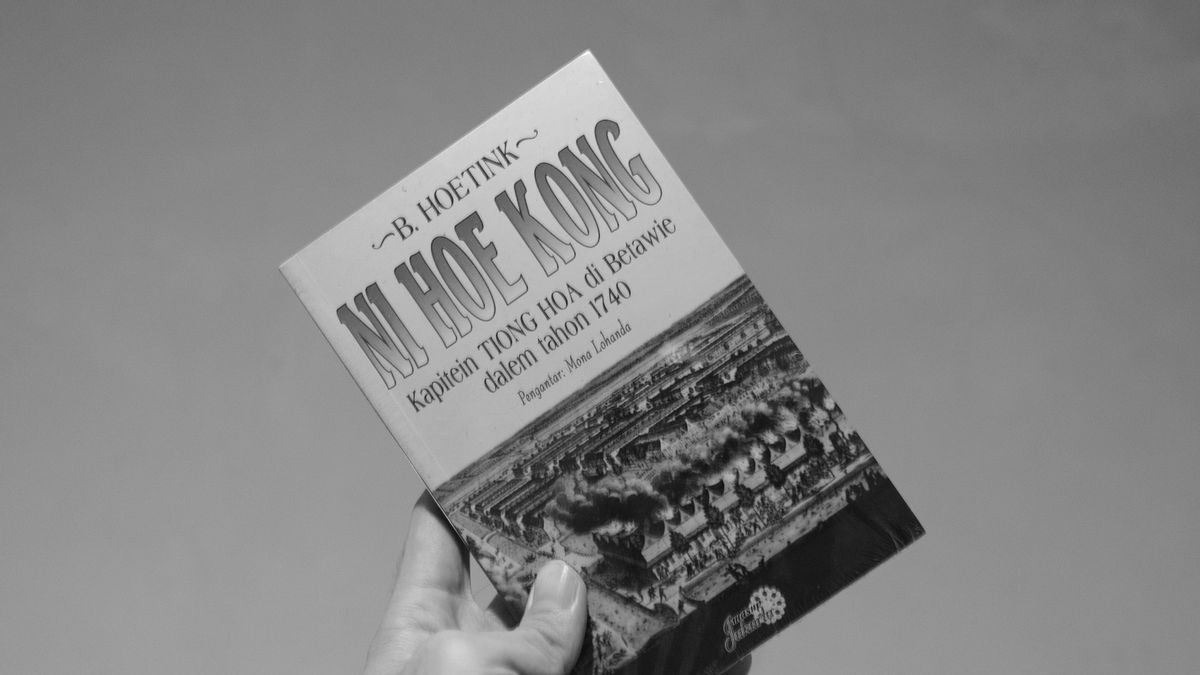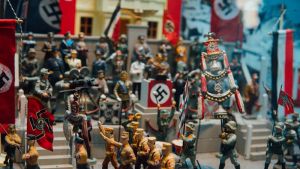JAKARTA - It may be that the adage "life is like a spinning wheel" has been passed down from generation to generation in today's society. But who knows, this piece of sentence is taken from the story of Puyi, a Chinese Emperor (1908-1912), who died as a gardener.
Actually, a narrative like Puyi also takes place in various places. In the archipelago, one of them. In the 18th century, the story of pain also had to be accepted by one of the Chinese Kapitan Ni Hoe Kong, who was previously trusted by the Dutch colonial government as the main leader of ethnic Chinese.
It should be noted, one of the requirements to become the main captain of China is of course wealthy. On that basis, Ni Hoe Kong also lived in wealth. He has lots of land, has dozens of sugar cane mills, and lives in luxury homes to prove the wealth of a captain.
Unfortunately, the outbreak of rebellion actually resulted in the bloodiest tragedy that the Chinese ethnic group had to experience in 1740. At least more than 10 thousand massacres took place, leaving Ni Hoe Kong with the same fate as Puyi.
The house was robbed, the business was not running, and Nie Hoe Kong was scapegoated as the only person responsible for this bloody act that resembled genocide - ethnic cleansing - this became known as lasting as "chinezenmoord" or the killing of the Chinese.
That picture is presumably to be conveyed by B. Hoetink in his book entitled Ni Hoe Kong: Kapitein Tionghoa in Betawie in 1740 (1918). In the incident which was also known as Geger Pacinan by Batavian residents, the owner of the book focused on the narrative process of investigation and trial from Ni Hoe Kong.
Moreover, at that time there were damning allegations that he took part in the 1740 rebellion. However, he clearly rejected all of them. Ni Hoe Kong continued to fight in court so that he would not receive a death sentence like the previous rebellion in 1721 by Pieter Erberveld who was famously known as Pangerang Pecah Kulit, because of his horrific execution of death. Two feet, two hands pulled by four horses who ran towards the opposite so that the skin broke.
Chinatown in BataviaInterestingly, the story of Nie Hoe Kong in this book is written in the Malay Lingua Franca, which for the present generation is a little difficult to interpret, so it takes twice the accuracy of reading. Because, as a whole this event is really interesting, especially regarding the details of the rebellion and guidance to Nie Hoe Kong regarding his actions as the most unlucky Chinese chief.
Therefore, to make it easier for readers to get a complete picture of the book, we will divide it into four chapters. Starting from the history of the rebellion, Nie Hoe Kong became the scapegoat, a reflection of the trial in Batavia, to the exile of Nie Hoe Kong in Ambon. Here are the details:
First, the history of the rebellion in 1740 was allegedly because the Company began to revoke the privileges of the Chinese who were the pulse of trade in Batavia. To make matters worse, the conditions at that time were many sugar factories that suffered losses and the rate of immigrants who came was getting higher. As a result, many of them who do not have a job have committed crimes.
Not wanting this to go on for long, the Dutch took a stand to urge all Chinese without exception to immediately apply for a residence permit. If they do not have a permit, the Dutch will get ready to arrest them, then they will be sent to Sri Lanka or South Africa. Unfortunately, rumors were that the people who had been arrested were killed by throwing them into the sea on their way.
Therefore, the rush of rebellion then intensified. Inevitably, VOC guard posts and sugar factories were attacked by the Chinese. A few days later the Company was furious by counterattacking, and erupted in the massacre of more than ten thousand ethnic Chinese.
Second, Ni Hoe Kong as the scapegoat. Where the opportunity for the Dutch to wash their hands for the mass slaughter was to scapegoat Ni Hoe Kong. The Company argued that as the Chinese "tribal head" in Batavia, he should know what was happening among its citizens. Never mind the evil conspiracy, regarding which Chinese citizens who have not paid a fee should have taken care of it.
This condition was reinforced by the fact that in the days leading up to the rebellion, the rebels made the captain's plantation area the center of the strategy for the rebellion. Based on that, the Dutch way of washing hands is getting more complete. "So it is easy for people to suspect that the attackers must have received the support or assistance of their nation from within the city of Batavia," wrote on page 15.
Third, the justice system in Batavia. The level of trust among the Batavian citizens in the court system run by the Company was quite low. Rules at will, arbitrary checks, and punishments at will are reasons for low public trust. These judicial ulcers were present when punishing Ni Hoe Kong.
VOC intrigueUsually all forms of civil and criminal cases within the Batavia area were first investigated by Schepenen or city officials. However, for the case of Kapitan Ni Hoe Kong, an exception was made, at that time Raad van Justitie or the VOC high court was immediately appointed to examine and prosecute the captain of Ni Hoe Kong, until the besluit or case file was issued on 18 October 1740.
Fourth, Ni Hoe Kong was exiled to Ambon. After going through a series of trials over the years and desperately denying his involvement in the 1740 rebellion, finally Ni Hoe Kong was sentenced to exile to Sri Lanka on 22 May 1744. Even so, Ni Hoe Kong then submitted a request to change the ban on exile to Sri Lanka, to only go to Ambon.
The request was granted. On February 12, 1746, he and his family left for Ambon. Previously, the price for Ni Hoe Kong was returned by the Dutch. however, it had decreased by a whopping 16 thousand rials because the court costs were borne by the accused. "For Ni Hoe Kong, you can say that Ambon is not a too bad dumpsite. Nor did he come there poor, ”on page 90.
Ni Hoe Kong was in Ambon shortly. On December 25, 1746, he died. Furthermore, through Ni Hoe Kong, people could understand how vile and cunning the old Company was. It's even more sneaky, because they are full of nepotism, double positions, political intrigue and the only thing they have in mind is how to double profits, nothing more.
Detail:
Book Title: Ni Hoe Kong: Kapitein Tionghoa in Betawie dalem Tahon 1740
Author: B. Hoetink
First Published: 1918
Publisher: Masup Jakarta
Number of Pages: 192
The English, Chinese, Japanese, Arabic, and French versions are automatically generated by the AI. So there may still be inaccuracies in translating, please always see Indonesian as our main language. (system supported by DigitalSiber.id)













